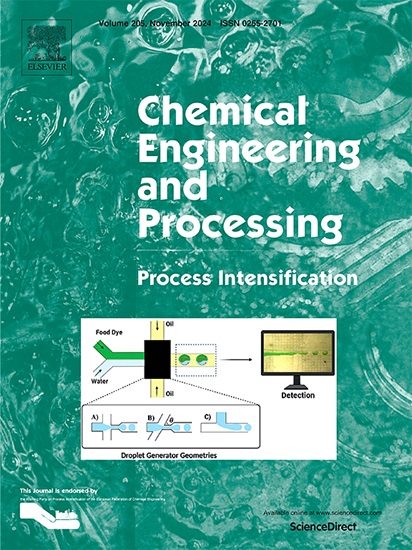ZnAlFeO4尖晶石及火法磁选残灰的应用:催化及重金属固定化
IF 3.8
3区 工程技术
Q3 ENERGY & FUELS
Chemical Engineering and Processing - Process Intensification
Pub Date : 2025-05-09
DOI:10.1016/j.cep.2025.110359
引用次数: 0
摘要
电镀污泥作为一种富含重金属的副产物,其资源化利用,特别是重金属的回收利用,近年来受到越来越多的关注。本文研究了ZnAlFeO4尖晶石和火法磁选过程产生的残灰的应用,重点研究了HMs的催化性能和凝固情况。采用ZnAlFeO4尖晶石对亚甲基蓝和四环素进行光催化降解,降解率分别为74.9%和83.6%。粉煤灰与残灰共烧结稳定了含有丰富Zn和Si/Al杂质的残灰,形成硅酸钙玻璃,有效地固定了HMs。在1400℃、粉煤灰含量为50%的条件下,HMs凝固效果最佳,Zn浸出量降至3.35 mg/L, Cr浸出量低于可检测水平。HMs固化的机理是形成玻璃状液渣,为HMs在硅酸盐结构内的固定提供了固定的场所,有效地抑制了HMs的释放。然而,过量的粉煤灰导致CaAl2Si2O8晶体的形成,破坏了硅酸盐玻璃框架并释放出HMs。该研究提供了将ES转化为功能材料的见解,通过发展可持续技术为废物管理和环境保护做出贡献。本文章由计算机程序翻译,如有差异,请以英文原文为准。

Application of ZnAlFeO4 spinel and residual ash generated from pyrometallurgical magnetic separation processes: Catalysis and heavy metals immobilization
The recycling of electroplating sludge (ES), a byproduct rich in heavy metals (HMs), is receiving increasing attention in recent years, especially in the context of HMs recovery and recycling. This study investigated the application of ZnAlFeO4 spinel and residual ash generated from pyrometallurgical magnetic separation processes, focusing on the catalytic performance and solidification of HMs. The photocatalytic degradation of methylene blue and tetracycline using ZnAlFeO4 spinel was conducted, with degradation rates of 74.9 % and 83.6 %, respectively. The residue ash, rich in Zn and Si/Al impurities, was stabilized through co-sintering with fly ash, forming calcium silicate glass, which immobilized HMs effectively. The optimal solidification of HMs was achieved at 1400 °C with 50 % fly ash, reducing Zn leaching to 3.35 mg/L and Cr below detectable levels. The mechanism of HMs solidification involves the formation of vitreous liquid slag, providing fixed sites for the immobilization of HMs within the silicate structure and effectively restraining their release. However, an excess of fly ash resulted in the formation of CaAl2Si2O8 crystals, disrupting the silicate glass framework and releasing HMs. The study provides insights into the transformation of ES into functional materials, contributing to waste management and environmental protection through the development of sustainable technologies.
求助全文
通过发布文献求助,成功后即可免费获取论文全文。
去求助
来源期刊
CiteScore
7.80
自引率
9.30%
发文量
408
审稿时长
49 days
期刊介绍:
Chemical Engineering and Processing: Process Intensification is intended for practicing researchers in industry and academia, working in the field of Process Engineering and related to the subject of Process Intensification.Articles published in the Journal demonstrate how novel discoveries, developments and theories in the field of Process Engineering and in particular Process Intensification may be used for analysis and design of innovative equipment and processing methods with substantially improved sustainability, efficiency and environmental performance.

 求助内容:
求助内容: 应助结果提醒方式:
应助结果提醒方式:


